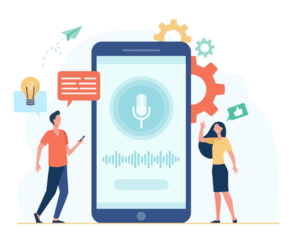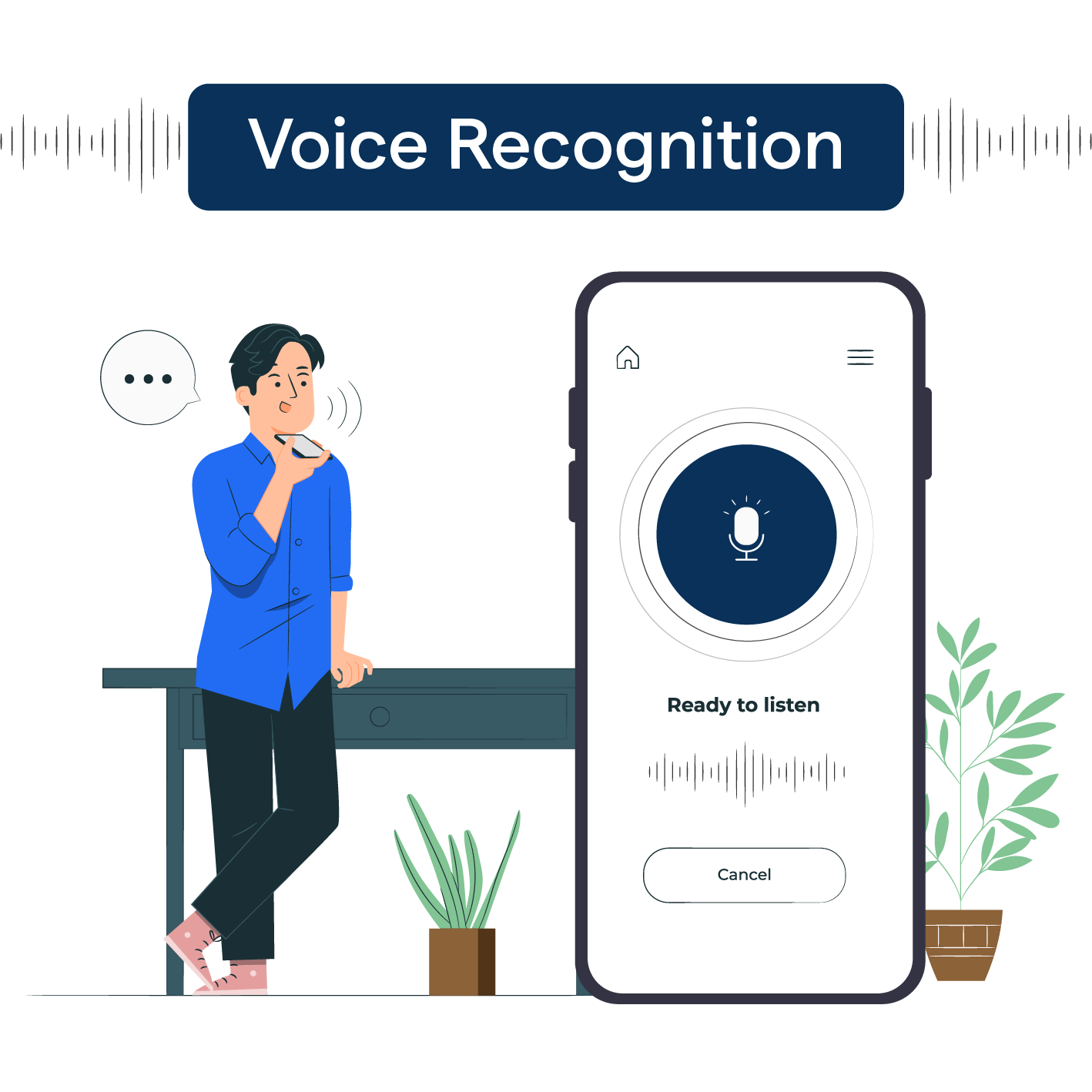What is Voice Recognition?

Voice recognition, also known as speech recognition, is a technology that enables computers and devices to understand and interpret human speech. It allows you to interact with devices using just your voice, making tasks like searching the web, sending messages, or controlling smart home gadgets more convenient and hands-free.
This technology has advanced significantly in recent years, thanks to artificial intelligence and machine learning, making voice recognition more accurate and user-friendly for everyday use.
How does Voice Recognition Work?
Step 1
Turning Sound Waves into Digital Data
Voice recognition begins by transforming sound waves into digital data. When you speak into a microphone, your voice's sound waves are captured and converted into digital signals that computers or other devices can process.
Step 2
Extracting Important Features
With the audio data in digital format, the voice recognition system identifies relevant features from the signal. This step involves recognizing unique aspects of your voice, like pitch, tone, and speaking rate, which help distinguish one person's voice from another.
Step 3
Matching Patterns and Recognizing Voices
After extracting features from the audio data, the system compares them to a known voice pattern database. This database, or voice model, holds a collection of voice samples and their corresponding features. The system attempts to find the closest match between the input audio data and the voice patterns in the database.
Step 4
Turning Speech into Text
Once a match is identified, the voice recognition system focuses on transcribing the spoken words into text. This speech-to-text conversion process uses algorithms to pinpoint individual words and phrases in the audio data and transform them into written text. Advanced systems also consider grammar, context, and language nuances for more accurate transcriptions.
Step 5
Constant Learning and Enhancements
Voice recognition systems consistently learn and enhance their performance. Exposure to more voice samples and user feedback helps them improve at recognizing various accents, dialects, and speech patterns. This continuous learning process ensures voice recognition technology becomes increasingly accurate and reliable in understanding and transcribing spoken language.
Types of Voice Recognition Technologies
Speaker-Dependent vs. Speaker-Independent Systems
Not all voice recognition systems are created equal. Some are speaker-dependent, meaning they're tailored to recognize a specific person's voice (like your personalized virtual assistant). Others are speaker-independent, designed to work with any voice that comes their way (like a public announcement system). Each type has its pros and cons, so choose wisely based on your needs!
Continuous vs. Discrete Speech Recognition
And now, for the grand finale: continuous and discrete speech recognition! Continuous systems (the real MVPs) can understand speech as it's naturally spoken, complete with all the pauses and nuances. Discrete systems, on the other hand, require you to speak. One. Word. At. A. Time. While they may be less sophisticated, they can still be useful in certain situations where accuracy is crucial.
Applications of Voice Recognition
Virtual Assistant Integration
Voice recognition technology powers virtual assistants like Siri, Alexa, and Google Assistant, allowing them to comprehend and react to voice commands. Users can ask questions, set reminders, manage smart home devices, and perform other tasks using only their voice.
Transcription Solutions
Transcription services employ voice recognition to transform spoken language into written text, benefiting journalists, students, and professionals who need to transcribe interviews, lectures, or meetings quickly and accurately.
Enhancing Accessibility
Voice recognition technology enhances accessibility for individuals with disabilities. For instance, people with limited mobility can use voice commands to control their devices, while those with visual impairments can access written content through speech-to-text features.
Customer Support and Call Centers
Voice recognition is increasingly utilized in customer support and call center applications. Interactive voice response (IVR) systems can comprehend and address customer inquiries, streamlining the customer support process and reducing waiting times.
Real-Time Language Translation
Some voice recognition systems can translate spoken language in real-time, facilitating communication between people who speak different languages. This technology is especially helpful in international business contexts or while traveling abroad.
Biometric Security Systems
Voice recognition can be employed as a biometric authentication method in security systems. By identifying a user's unique voice patterns, these systems can provide access to secure areas or devices, offering an extra layer of security.
In-Car Applications
Many contemporary cars feature voice recognition systems that enable drivers to control various functions using voice commands. This includes navigation, climate control, and entertainment systems, helping to minimize distractions while driving.
Applications in Healthcare

The healthcare industry uses voice recognition technology for tasks such as transcribing patient records, streamlining administrative processes, and even assisting in remote patient monitoring. This helps healthcare professionals save time and enhance the overall quality of patient care.
Challenges and Limitations of Voice Recognition
Accents and Dialects
One challenge of voice recognition is understanding various accents and dialects. People from different regions or countries may pronounce words differently, which can confuse the system and lead to inaccurate results.
Background Noise
Voice recognition systems can struggle in noisy environments. Background noise, like music or conversations, can interfere with the system's ability to accurately understand your voice commands, reducing its effectiveness.
Limited Vocabulary
While voice recognition technology has improved significantly, it may still have difficulty understanding specialized or uncommon words and phrases. This limitation can be frustrating for users who need to interact with niche topics or industry-specific language.
Privacy Concerns
Using voice recognition often means sharing your voice data with the service provider, which raises privacy concerns for some users. Ensuring the security of voice data and maintaining user trust are essential aspects of voice recognition technology.
Frequently Asked Questions

How Does Voice Recognition Work?
Voice recognition technology works by converting spoken words into written text. It involves signal processing, machine learning algorithms, and natural language processing to understand and transcribe human speech.
Can Voice Recognition Understand Different Accents?
Yes, modern voice recognition systems are designed to understand various accents. However, they might require some training and may not be 100% accurate with all accents.
Is Voice Recognition Secure?
While voice recognition technology can offer an additional layer of security, it's not completely infallible. It's best used in combination with other security measures for optimal protection.
How Can I Improve My Device's Voice Recognition?
To improve your device's voice recognition, you can typically go through a voice training process in the device settings. This process helps the system better understand your unique speech patterns.
Does Voice Recognition Work in All Languages?
Most voice recognition systems support multiple languages, but not all languages are supported. Check the settings of your specific device or software to see which languages are available.



